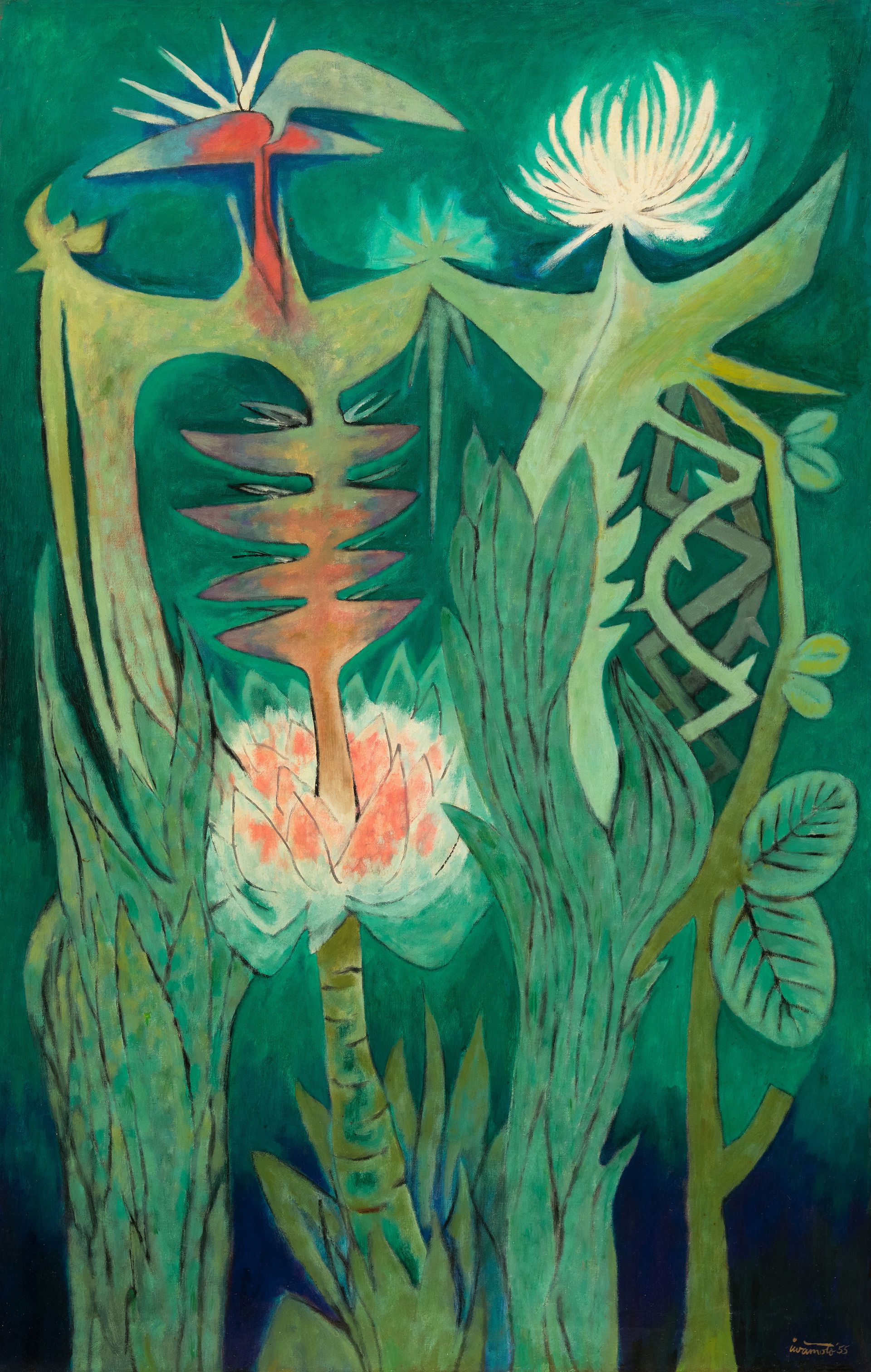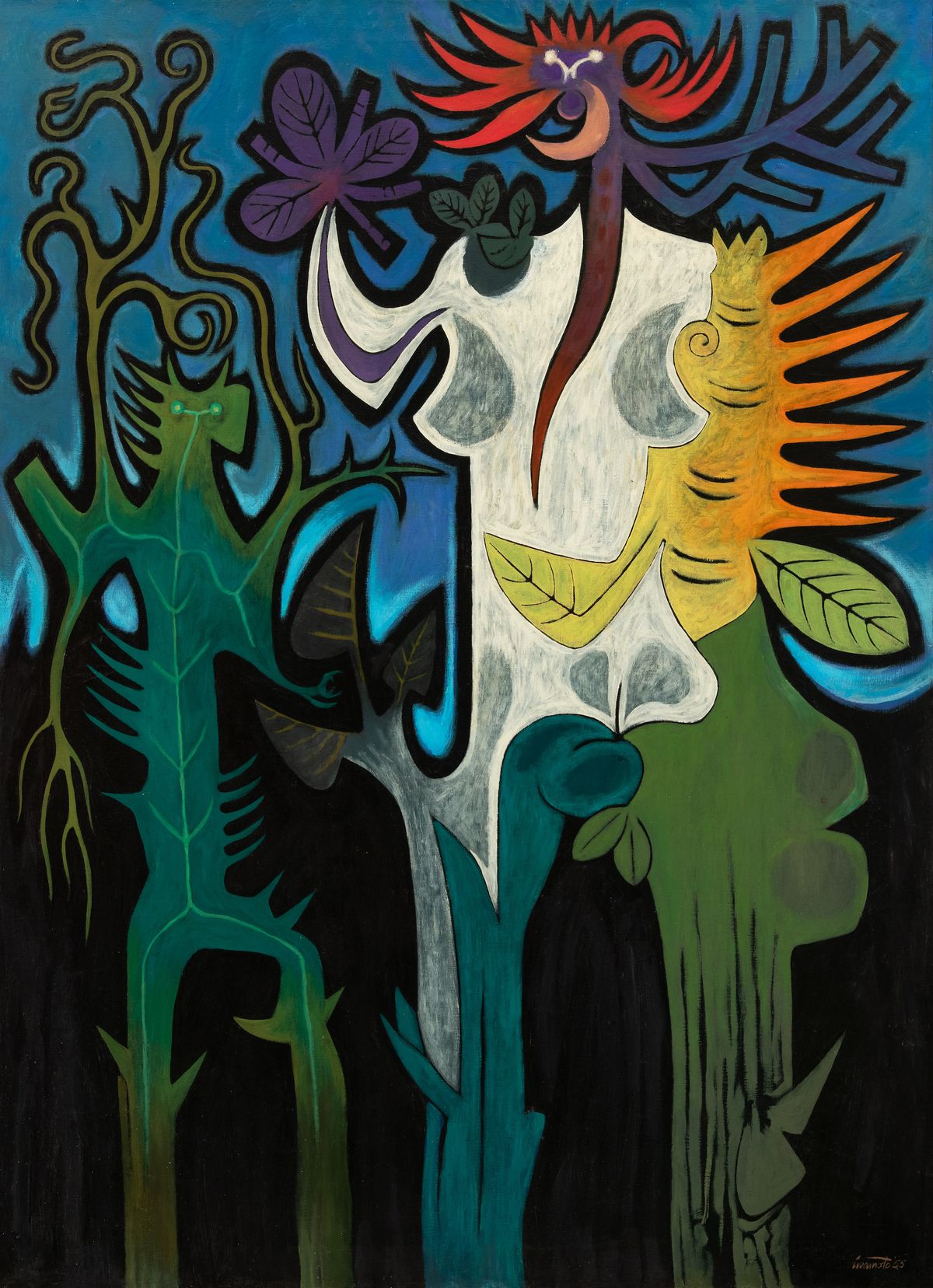New York gallery Hollis Taggart will begin representing the estate of 20th-century Japanese American painter Ralph Iwamoto. The gallery will inaugurate this addition to its roster with a show next month (23 March-15 April) of Iwamoto’s early, Surrealist-inspired works that draw from the flora and fauna of his native Hawaii. These early canvases were painted in 1955, when Iwamato was only in his late 20s.
Iwamoto was born in Honolulu, Hawaii in 1927. He served in the Second World War before moving to New York City in 1948 and enrolling in the Art Students League with help from the GI Bill. His first New York exhibition was in 1955, where his work was shown alongside Alfred Leslie and Louise Nevelson at Rugina Gallery. In 1957, he was hired to work as a guard at the Museum of Modern Art, where he met and closely befriended fellow guards Dan Flavin, Sol LeWitt and Robert Ryman. In 1958, his work was included in a group show at the Whitney Museum of American Art.

Ralph Iwamoto in 2004. Photo by Steve Wada. Courtesy of the Estate of Ralph Iwamoto
Subsequent gallery and institutional shows followed, though Iwamoto never achieved the celebrity status experienced by a number of his colleagues and contemporaries. His painting style evolved dramatically throughout his working life, beginning in the Surrealist and Cubist-inspired mode that he operated in throughout the 1950s, then evolving through various forms of abstraction including, Minimalism and geometric abstraction, and into various permutations unique to Iwamoto. Iwamoto was a longtime resident of the famed Westbeth Artists Housing building in Manhattan’s West Village; he died in 2013.
“Ralph was a person who simply did not toot his own horn. He was not particularly interested in running out and pushing his name or pushing his art. He had shows in various places, but he was one of those people who was content working on his art and if a show came to him, that was fine by him. He did not push his name into the limelight,” says curator Jeffrey Wechsler, who first met Iwamoto when he was including him in the group show Asian Traditions/Modern Expressions: Asian American Artists and Abstraction, 1945-1970, a 1997 exhibition at the Zimmerli Art Museum at Rutgers University. “He also was an artist who—in his early years especially—changed his style a few times, and most art dealers tend to like stable, signature styles, so that may have been another reason why people didn’t pick him up.”

Ralph Iwamoto, Lowly Splendor, 1955 Courtesy the Estate of Ralph Iwamoto and Hollis Taggart, New York
It was Wechsler who introduced Taggart to Iwamoto’s work about five years ago, and when the gallery recently expanded, it was able to take him on as one of its artists.
“Iwamoto fits our gallery perfectly because our mission is to re-discover lost and forgotten but highly skilled and successful artists of the past whose legacies deserve renewed attention,” says Hollis Taggart. “Many of these forgotten artists, like Iwamoto, had extensive exhibition histories and highly acclaimed credentials in their own time, for a reason, and simply need and deserve renewed scholarship and recognition.”


